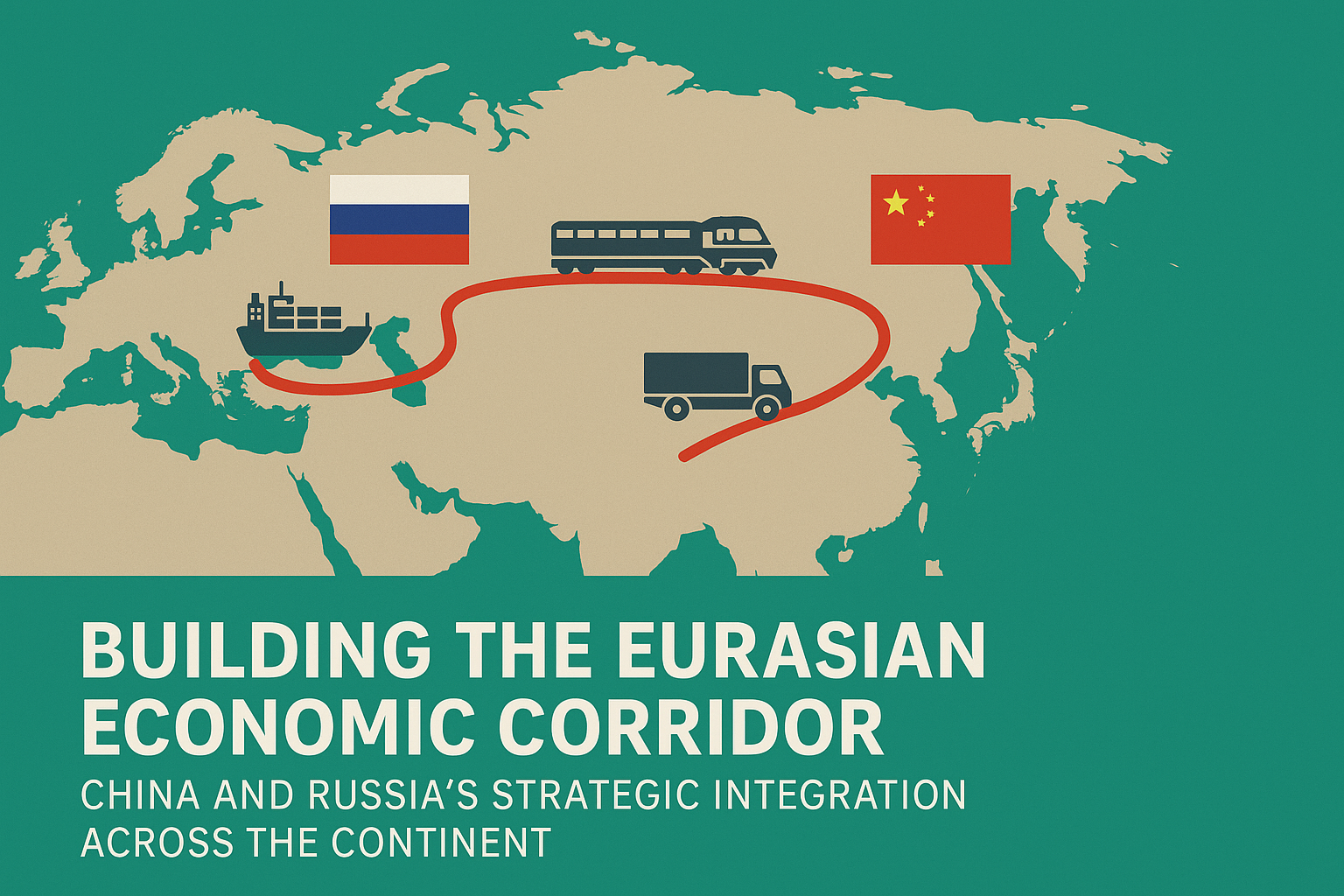- Introduction: A New Geopolitical Blueprint for the 21st Century
- Where Belt and Road Meets Eurasianism
- Overland Economic Corridors
- Arctic and Maritime Infrastructure
- Energy Infrastructure and Interdependence
- Institutional and Regulatory Linkages
- Strategic Implications
- Conclusion: The Rebirth of the Continental Order
Introduction: A New Geopolitical Blueprint for the 21st Century
China and Russia are jointly advancing a vast web of economic and infrastructure projects across the Eurasian continent. This goes beyond mere bilateral cooperation—it is a coordinated attempt to reshape global order, positioning Eurasia as a counterweight to the Western-dominated world. At the heart of this movement lie two strategic visions: China’s Belt and Road Initiative (BRI) and Russia’s Eurasianism. This report explores their intersection, key projects, and geopolitical implications.
Where Belt and Road Meets Eurasianism
- Belt and Road Initiative (BRI): A Chinese vision for a land-sea trade network connecting Asia, the Middle East, Europe, and Africa through infrastructure and investment.
- Eurasianism: A Russian geopolitical doctrine seeking to redefine Russia not as a Western outpost, but as the core of a Eurasian civilization, distinct from Western liberalism.
The convergence point: a shared pursuit of a multipolar world, sovereignty-first diplomacy, and infrastructure-based economic integration across the continent.
Overland Economic Corridors
China–Europe Railway Express (中欧班列)
- A massive freight rail network linking inland Chinese cities (e.g., Chongqing, Chengdu, Zhengzhou) to European destinations (e.g., Duisburg, Hamburg).
- Key route: China → Kazakhstan → Russia → Belarus → Poland → Germany.
- Strategic advantage: faster than sea, cheaper than air; enables resilient trade bypassing maritime chokepoints.
Moscow–Kazan High-Speed Railway
- A Russian infrastructure project backed by Chinese funding and technology.
- Planned as a segment of a larger high-speed rail from Beijing to Moscow and Berlin, shaping a “Silk Railroad.”
- Current status: delayed due to financial and political factors, but remains a strategic priority.
Arctic and Maritime Infrastructure
Northern Sea Route (NSR) and the Polar Silk Road
- A maritime corridor along Russia’s Arctic coast, shortening Asia–Europe shipping by up to 30%.
- China brands this as the Polar Silk Road, integrating it into BRI.
- Chinese investment in Arctic icebreakers, port development, and satellite networks complements Russian infrastructure.
Ports in the Russian Far East
- Vladivostok and Nakhodka serve as China-linked logistics hubs on the Sea of Japan.
- Joint development of port terminals and industrial zones by Chinese firms supports eastbound and westbound Eurasian trade.
Energy Infrastructure and Interdependence
Power of Siberia Gas Pipeline
- A 3,000 km pipeline delivering Russian natural gas to northeastern China since 2019.
- Strategic for both sides: Russia diversifies away from Europe, China secures a stable long-term energy supply.
Yamal and Arctic LNG Projects
- Joint ventures involving Chinese state-owned companies (CNPC, Silk Road Fund) in Russian Arctic energy fields.
- LNG shipments to Asia via the Arctic Sea Route reduce dependence on the Strait of Malacca.
Institutional and Regulatory Linkages
BRI–EAEU Economic Integration Agreement
- Since 2015, China and the Russia-led Eurasian Economic Union (EAEU) have pursued customs harmonization, trade facilitation, and investment cooperation.
- The aim: build an Eurasian alternative to Western-style FTAs and economic blocks like the EU or CPTPP.
Strategic Implications
| Dimension | Geopolitical Effect |
|---|---|
| U.S. containment | Bypasses Western sanctions, accelerates de-dollarization |
| Central Asia | Enhances joint Sino-Russian influence in logistics, security, and resources |
| Europe | Divides EU economic interests; fosters selective Eurasian alignment |
| Global South | Presents a model of “authoritarian-led development” attractive to non-Western countries |
Conclusion: The Rebirth of the Continental Order
Once considered a logistical and geopolitical void, Eurasia is now becoming the heart of a new strategic order. By integrating China’s financial muscle with Russia’s territorial depth and natural resources, a new framework of multipolar, infrastructure-driven connectivity is emerging.
This trend demands that Western countries—including Japan, the U.S., and the EU—reassess their strategic assumptions. Currencies, supply chains, alliances, and political values are all being reshuffled in the shadow of the Eurasian corridor.


